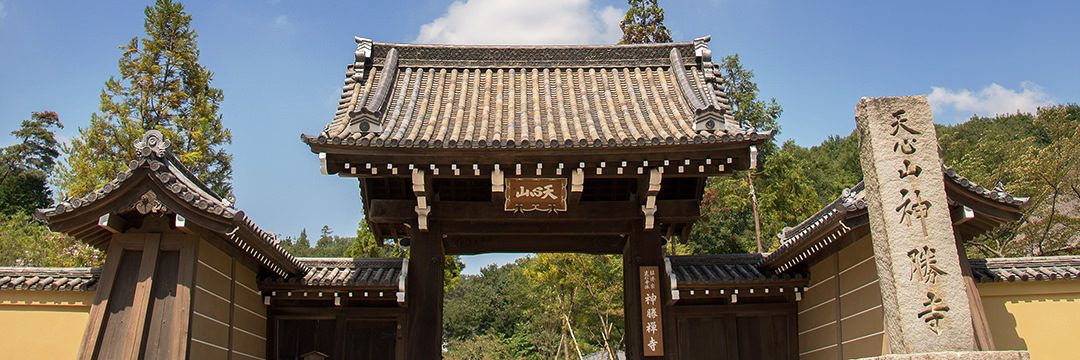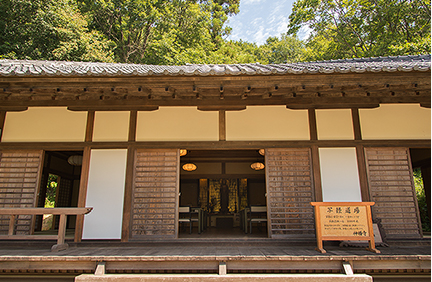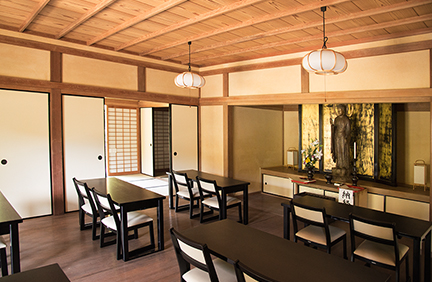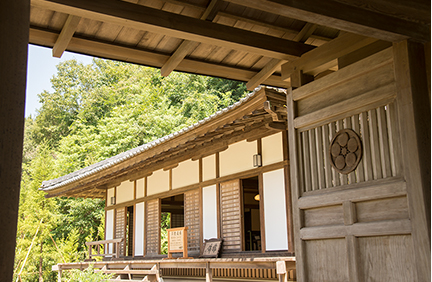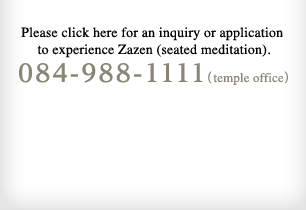
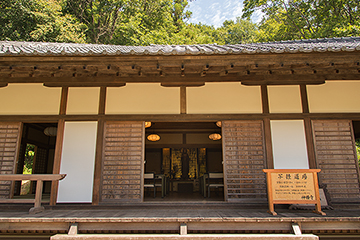
| Charter | <One Day> | ¥10,000 |
|---|---|---|
| <One Hour> | ¥2,000 | |
| <One Week> | ¥30,000 |
This building was originally built as a "Jibutsu-dō" (Inner Buddha Hall) that enshrines Amida Tathāgata, a symbol of Pure Land belief.
The standing statue of Amida Tathāgata enshrined in the hall is the personal buddha statue of the founding patron.
The hall was designed by Nakamura Masao. He made it in a peaceful style to remind people of Ginkaku-ji Tōgū-dō (Eastward Seeking Hall), which was Ashikaga Yoshimochi's inner Buddha hall. However, it is considerably larger.
The founding patron named the building Hibutsu-dō (Non-Buddha Hall). The characters hibutsu (non-buddha) that hang on the front of it were written by him.
The Hibutsu-dō can be used for a variety of purposes, such as calligraphy and flower arrangement lessons.
Please contact us for information.
- [Notes]
- In the case of a cancellation, please inform us by the day before your reservation.
- Nakamura Masao profile
- Born in Aichi prefecture in 1927. A leader in tearoom and teahouse architecture and research. Area of study is Japanese architecture. Doctor of engineering (Kyōto University).
After graduating from Hikone Engineering Academy (currently Shiga University), he became a trainee at Kyōto University's Faculty of Engineering. He then served at various posts at the university including assistant, and later became a professor at Kyōto Institute of Technology. During his tenure there he also served as a member of the Protection of Cultural Properties Council's Expert Committee and Katsura Imperial Villa's Maintenance Committee, president of the Japanese Society for Studies of CHANOYU, and so on. In 1980 he established the Kyōto Traditional Architecture Association, which aims for the continuation and development of the wood architecture tradition. After leaving his post at the Kyōto Institute of Technology in 1991, he taught at other locations, including Fukui University of Technology.
His major publications include "Cha no kenchiku (Tea Architecture)" and "Chashō to kenchiku (Tea Masters and Architecture)". Portfolios of his works have been published as "Chaen no ishō (Tea Garden Design)"and so on.
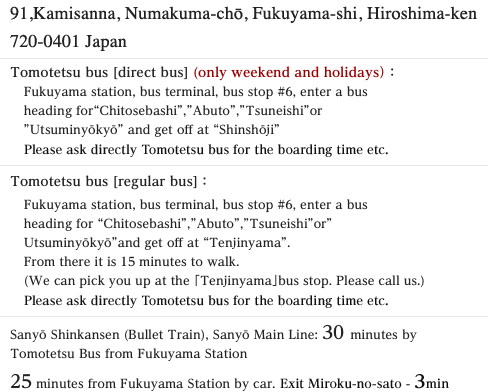 91,Kamisanna, Numakuma-chō, Fukuyama-shi, Hiroshima-ken 720-0401 Japan
91,Kamisanna, Numakuma-chō, Fukuyama-shi, Hiroshima-ken 720-0401 Japan
Tomotetsu bus (direct bus, only weekend and holidays)
Fukuyama station, bus terminal, bus stop #6, enter a bus heading for 『Miroku no Sato direct bus』 and get off at 「Shinshōji」
Tomotetsu bus (regular bus)
Fukuyama station, bus terminal, bus stop #6, enter a bus heading for 「Chitosebashi」,「Abuto」,「Tsuneishi」or「Utsuminyōkyō」and get off at 「Tenjinyama」. From there it is 15 minutes to walk.(We can pick you up at the 「Tenjinyama」bus stop. Please call us.)
※Please ask directly Tomotetsu bus for the boarding time etc.
084-952-3100
Sanyō Shinkansen (Bullet Train), Sanyō Main Line: 30 minutes by Tomotetsu Bus
25 minutes from Fukuyama Station by car.
Exit Miroku-no-sato - 3min







